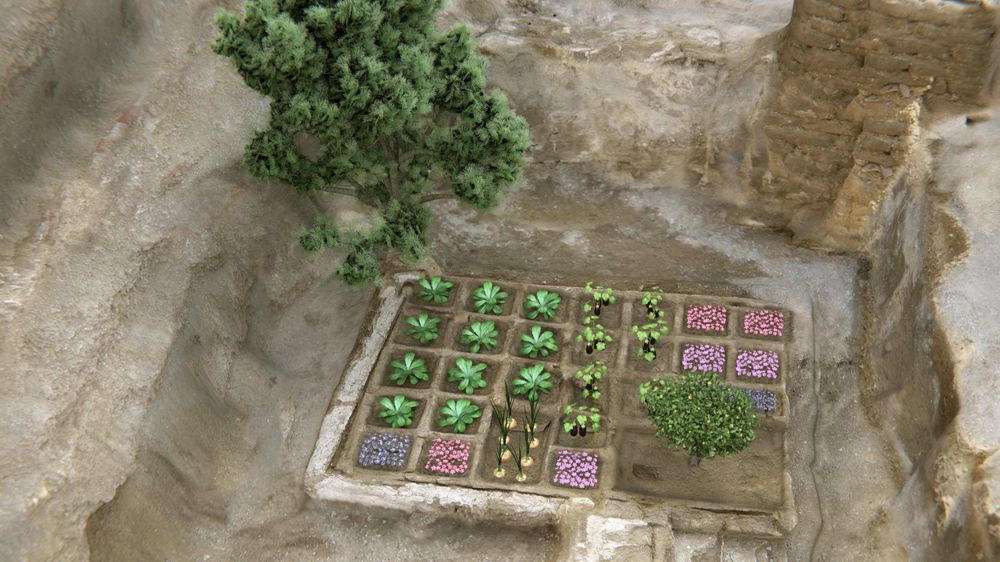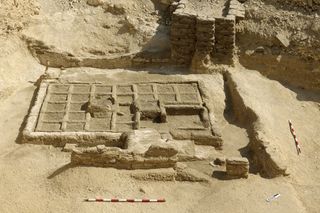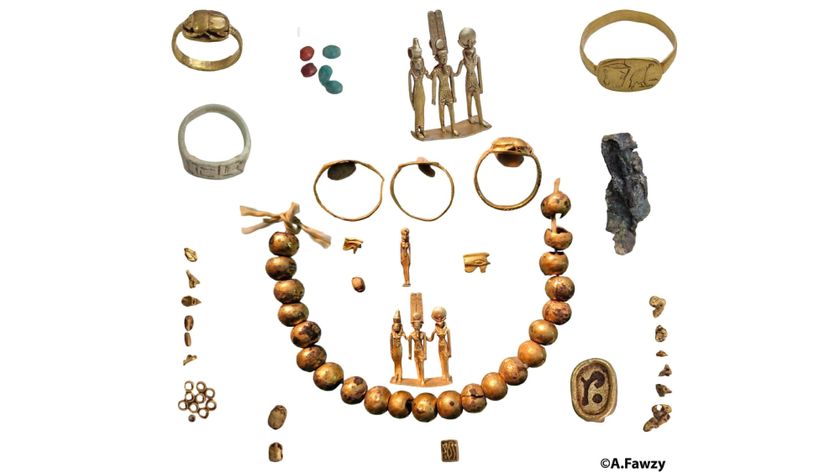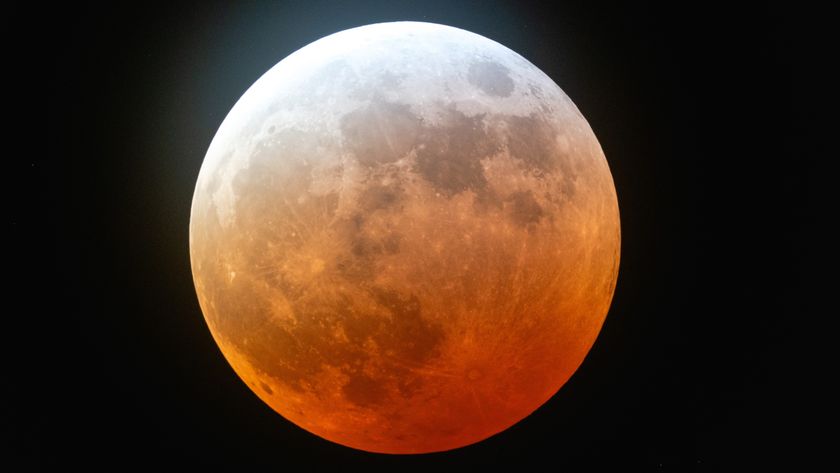Ancient Funerary Garden Discovered in Egypt for First Time

About 4,000 years ago in ancient Egypt, landscapers constructed a rectangular funerary garden bed likely filled with lettuce, shrubs and trees, according to archaeologists from the Spanish National Research Council (CSIC).
The botanical finding, discovered on the Dra Abu el-Naga hill in Luxor, is helping archaeologists learn more about life in what was once ancient Thebes. During the time of the garden's construction, Thebes was the capital of the unified kingdom of Upper and Lower Egypt, the researchers said.
Though archaeologists knew such gardens existed because of illustrations on tombs, this is the first actual funerary garden ever found in Egypt, the researchers said. [See Photos of the Funerary Garden at Thebes]
"We knew of the possible existence of these gardens since they appear in illustrations both at the entrances to tombs, as well as on tomb walls, where Egyptians would depict how they wanted their funerals to be," José Manuel Galán, the CSIC archaeologist who led excavation, known as the Djehuty Project, said in a statement.
Galán described the garden as a rectangle raised about 1.6 feet (0.5 meters) off the ground and divided into beds, each about 0.03 square feet (30 square centimeters) in area. Two trees were planted next to the garden in ancient times, Galán added.
"This is the first time that a physical garden has ever been found, and it is therefore the first time that archaeology can confirm what had been deduced from iconography," Galán said. An analysis of the garden will reveal what plants and environmental conditions were present in ancient Thebes, he noted.

The plants grown in the funerary garden likely had symbolic and ritualistic significance, the archaeologists said. "Therefore, the garden will also provide information about religious beliefs and practices, as well as the culture and society at the time of the 12th Dynasty when Thebes became the capital of the unified kingdom of Upper and Lower Egypt for the first time," Galán said. (The 12th Dynasty lasted from 1939 B.C. to 1760 B.C.)
Sign up for the Live Science daily newsletter now
Get the world’s most fascinating discoveries delivered straight to your inbox.
For instance, archaeologists know that palm, sycamore and Persea trees were associated with the power of resurrection, he said. What's more plants, including lettuce, were related to fertility, and thus a return to life, Galán said. [4,000-year-Old Funerary Garden Unearthed in Egypt | Video]
"We must wait to see what plants we can identify by analyzing the seeds we have collected," he said. "It is a spectacular and quite unique find, which opens up multiple avenues of research" — including investigations on ancient religious beliefs, funerary practices and botany, he said.
Ancient shrubs
Archaeologists found the 10- by 6.5-foot (3 by 2 meters) garden in an open courtyard at the entrance of a rock-cut tomb from the Middle Kingdom, likely dating to 2000 B.C.
The garden's different beds likely held different types of plants and flowers, the researchers said. The center of the garden had two beds that were set higher than the surrounding ones, which likely held small trees or shrubs, the archaeologists noted.
Surprisingly, one corner of the garden still held the remains of a tamarisk shrub, complete with roots and a 12-inch-long (30 cm) trunk. Next to the shrub, the archaeologists found a bowl holding dates and other fruit, perhaps placed there as an offering.
Next to the tomb's façade, archaeologists found a small mud-brick chapel with three stone tombstones, known as stelae, inside. However, these tombstones are dated to the 13th Dynasty, at about 1800 B.C., meaning they were made after the garden was created. [5 Big Archaeology Stories to Watch for in 2017]
One of the tombstones belonged to Renef-seneb, and another to "the soldier ('citizen') Khememi, the son of the lady of the house, Satidenu," the researchers said. Each tombstone has a reference to Montu, a local god, and to the funerary gods Ptah, Sokar and Osiris.
"These finds highlight the importance of the area around the Dra Abu el-Naga hill as a sacred center for a wide range of worship activities during the Middle Kingdom," Galán said. "This helps us understand the high density of tombs in later times as well as the religious symbolism that this area of the necropolis holds."
Original article on Live Science.

Laura is the archaeology and Life's Little Mysteries editor at Live Science. She also reports on general science, including paleontology. Her work has appeared in The New York Times, Scholastic, Popular Science and Spectrum, a site on autism research. She has won multiple awards from the Society of Professional Journalists and the Washington Newspaper Publishers Association for her reporting at a weekly newspaper near Seattle. Laura holds a bachelor's degree in English literature and psychology from Washington University in St. Louis and a master's degree in science writing from NYU.











